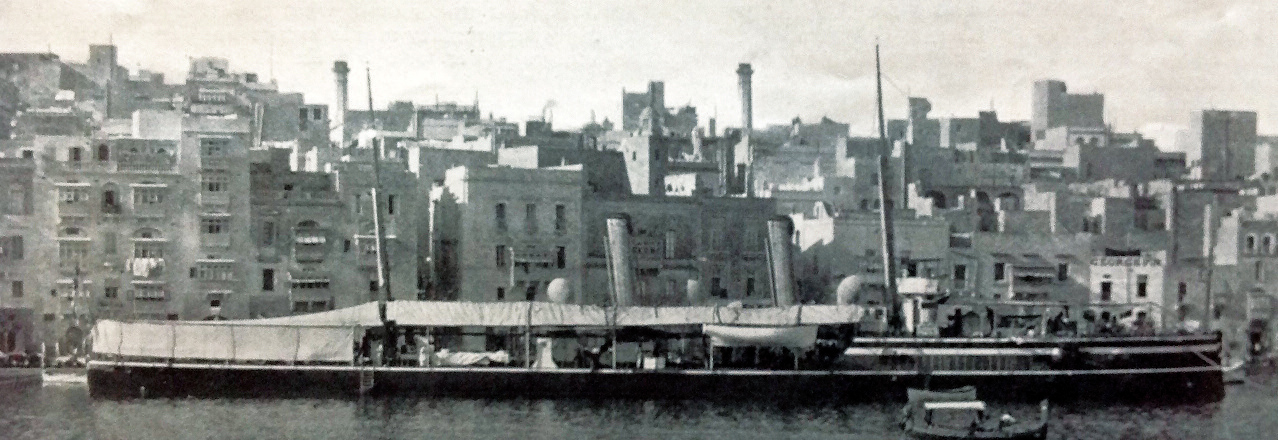Edward Cecil Villiers was born in Blackheath, Kent, on 16th February 1866. On 15 July 1879, at the age of thirteen, he joined the Navy as a trainee on board HMS Britannia. This would be the start of a long naval career for Edward. At eighteen, he was a midshipman on board HMS Northampton and in 1886 he received his commission as a Sub-Lieutenant. Four years later in 1890, Edward was made a full lieutenant. In 1900, he was in command of his first ship, the HMS Salamander, on duty in the Mediterranean. A note in his service record in June 1899 says:
“British Ambassador, Constantinople reports that Lieutenant Commander Villiers showed great patience and discretion in dealing with Turkish refugees on board Salamander”
At around the same time, Edward married Anne Gordon Haynes-Smith in the British Embassy at Constantinople. By 1911, Edward and Anne were living in Faversham, Kent, with their four sons and one daughter.
In 1912, Edward was appointed Captain of HMS Actaeon, a shore base at Sheerness in Kent and home of the Torpedo School. Edward commanded HMS Acteon throughout the First World War, and in the 1917 King’s Birthday Honours, was appointed a Companion in the Most Distinguished Order of Saint Michael and Saint George (C.M.G.) for his war services.
Later that year, the Admiralty decided that Edward’s time in the Navy was over and on 23rd October 1917, he was placed on the Retired List at the rank of Vice-Admiral. On his retirement, the following was added to his service record by Sir George Callaghan:
“1st March 1918. As Captain of Actaeon, this officer has had the command of the “Extended Defence of Nore Command” since the outbreak of war with complete success. (He) Has paid unremitting attention to the large number of craft under his orders. In addition to his work as Captain of the Torpedo School, which he has carried out to my satisfaction, he has devoted much time to several inventions for war purposes, several of which have been adopted by the Board of the Admiralty.”
This was not to be the end of Edward’s Naval career, however, as on the day of his enforced retirement, he was reappointed to the command of HMS Actaeon and placed once again in charge of the Extended Defence of Nore. He was to hold this position until 10th February 1919.
In addition to the C.M.G., Edward received the British War Medal for his war service. He died on 16th April 1939 at his home in Essex.

